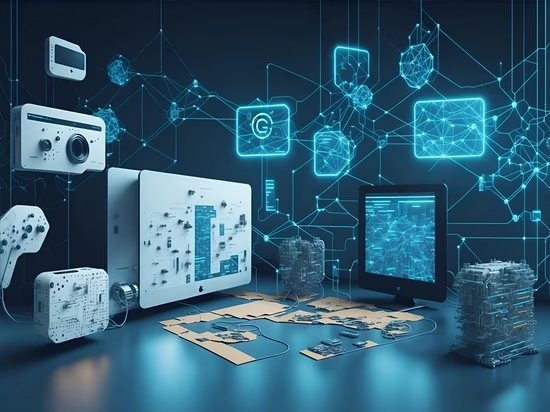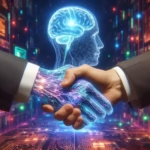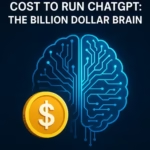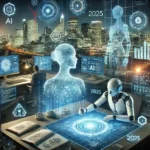Daily Queries: ChatGPT(OpenAI) processes over 1 billion queries each day, highlighting its role as a major platform for information retrieval and interaction. DemandSage
Remember Google, the smartest tool on the internet? You’d type a question— “best places to eat in near me”—and it would give you pages of links. We became experts at skimming articles, clicking on blue links, and navigating websites to find answers.
But now, things have changed.
Instead of clicking, scrolling, and filtering through results, millions are turning to something faster, more intuitive, and more human-like: ChatGPT. Just type your question like you’re asking a friend, and boom—it responds with a full answer. No links, no ads, no fluff. Just answers. From conversations to creativity, it has all you need.
So, what’s the secret sauce behind ChatGPT?
Let’s decode the magic behind this chat-powered revolution.
Table of content
- How does ChatGPT(OpenAI) machine looks?
- The Brain Behind the Bot
- Training Days: How It Learned Everything?
- Brainstorm Mode: What Happens When You Ask a Question?
- Connected to the Web: ChatGPT’s Evolving Internet Access
- The Future of ChatGPT (2025 and Beyond)
- Final Thoughts: The Magic Unveiled
How does ChatGPT(OpenAI) machine looks?
Continue reading ⤵

The “ChatGPT machine” is a powerful AI model that runs on thousands of high-end computers (servers) in big data centers. These servers use advanced GPUs (like NVIDIA A100s) and are housed in warehouse-sized rooms full of blinking lights and cooling systems. You use a simple app, but behind the scenes, it’s a massive AI brain in a supercomputer setup.
The Brain Behind the Bot

“ChatGPT runs on thousands of powerful servers—like a digital brain stretched across a global supercomputer.”
At its core, ChatGPT is a smart computer program that understands and generates human-like language. Think of it you’re in a giant library. You ask the librarian, “What’s the best way to tie a tie?”
She smiles and hands you 20 books, saying, “You’ll find it somewhere in there.”
That’s how Google use to work—powerful, but you have to do the digging.
Now imagine asking the same question and the librarian says,
“Let me show you step-by-step. Oh, and here’s a visual guide. Want it in casual or formal style?”
That’s ChatGPT—your new digital librarian who doesn’t just point you to information but talks it through with you.
The “GPT” in ChatGPT stands for Generative Pretrained Transformer—fancy words, right? Let’s unpack those.
Generative: It can create or generate text.
Transformer: This is a special type of model that helps the AI understand the meaning of words based on context .
Pretrained: It has already read a LOT of stuff before you even start chatting.
Training Days: How It Learned Everything?
ChatGPT learned to talk by reading almost the entire internet. During its training phase, it was fed mountains of books, articles, websites, and even code—millions and millions of words.
But here’s the catch: it wasn’t told what to learn. Instead, it learned by playing a giant guessing game. For example, it saw the sentence:
“The cat sat on the ____.”
And it had to guess the missing word: “mat.” It kept doing this—billions of times. Every time it guessed wrong, it learned from that mistake. Slowly, it got better and better at understanding how language works.
Brainstorm Mode: What Happens When You Ask a Question?

“The moment you ask a question, a web of machines lights up—thinking, searching, and responding in real-time like the spark of a digital mind at work.”
Let’s say you type:
“Write me a poem about coffee.”
Here’s what happens next:
- ChatGPT breaks down your request into small pieces called “tokens” (like splitting a sentence into syllables).
- It looks at all the tokens you typed and tries to understand what you mean.
- Using patterns it learned during training; it starts generating one word at a time.
- It continues predicting the next word, based on everything that came before, until the full response is complete.
It’s like building a sentence with Lego blocks—one piece at a time, always checking how well it fits with the last one.
Connected to the Web: ChatGPT’s Evolving Internet Access

“Plugged into the pulse of the internet, ChatGPT now learns in real-time — blending memory, machine, and the moment.”
In 2025, ChatGPT has significantly advanced its ability to access real-time information. While earlier versions relied solely on pre-trained data, current iterations can browse the internet to provide up-to-date answers.
🌐 Real-Time Web Browsing
ChatGPT now features integrated web browsing capabilities, allowing it to fetch current information from the internet. This means it can provide timely answers on topics like recent news, sports scores, and stock prices. Users can enable this feature by selecting the appropriate settings within the ChatGPT interface. OpenAI
🧠 Memory and Context
ChatGPT has also improved in maintaining context across sessions. With the introduction of memory features, it can remember facts about the user between chats, enhancing the continuity of conversations. Users have control over this memory and can manage or delete stored information as desired.
🤖 Still No Emotions
Despite these advancements, ChatGPT remains an AI model without consciousness or emotions. It generates responses based on patterns in data and does not possess opinions or feelings.
Can it be wrong?
Yep, just like humans, ChatGPT can mess up. This is called AI hallucination—when it confidently says something that’s not true.
Examples:
- Making up fake statistics.
- Giving wrong facts.
- Misunderstanding your question.
Why does this happen? Because ChatGPT doesn’t “know” facts. It just predicts words that look right based on its past training. Think of it as a super smart parrot—great with words, but not always correct.
The Future of ChatGPT (2025 and Beyond)
AI like ChatGPT is evolving fast in 2025:
1.Memory Upgrade: ChatGPT now remembers your name, preferences, and writing style for more personalized interactions.
2.Multimodal: It can now understand text, images, and voice. You can upload photos, charts, or use voice input/output.
3. Voice & Video: OpenAI is testing realistic AI voices and video capabilities, likely coming soon.
4.Emotional Intelligence: ChatGPT detects emotions like anger or joy, improving responses over time.
5.Better Accuracy: Expect more reliable answers with better data filtering, citations, and live fact-checking tools.
6. Coming Soon: Offline support, deeper memory, cross-app AI assistants, and visual reasoning.
In Short: 2025 is a game-changing year for ChatGPT, transforming it into a more intuitive, multimodal assistant
Final Thoughts: The Magic Unveiled
Now you know—ChatGPT isn’t magic. It’s a sophisticated language prediction engine, powered by vast data and advanced algorithms that predict what comes next. But when everything clicks, the results can feel nothing short of magical.
As long as you approach it with thoughtfulness—verifying facts and trusting your own judgment—ChatGPT can become an invaluable asset in your digital toolkit, especially as it continues to evolve in 2025.
“Sharing is caring! Share this article to spread the word“
Source:
Disclaimer:
This content is for informational purposes only and reflects the general architecture and operational design behind ChatGPT as of April 2025. Specific implementation details may vary based on system updates or infrastructure changes by OpenAI and its partners. This overview is based on publicly available information and does not reveal proprietary or confidential details.




























Leave a Reply